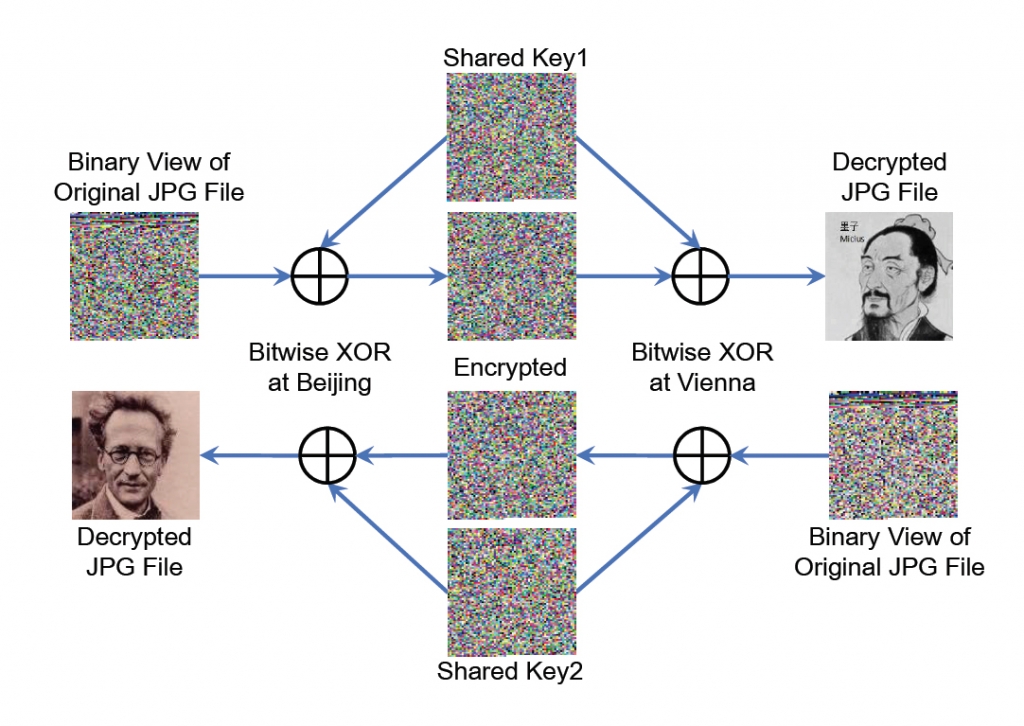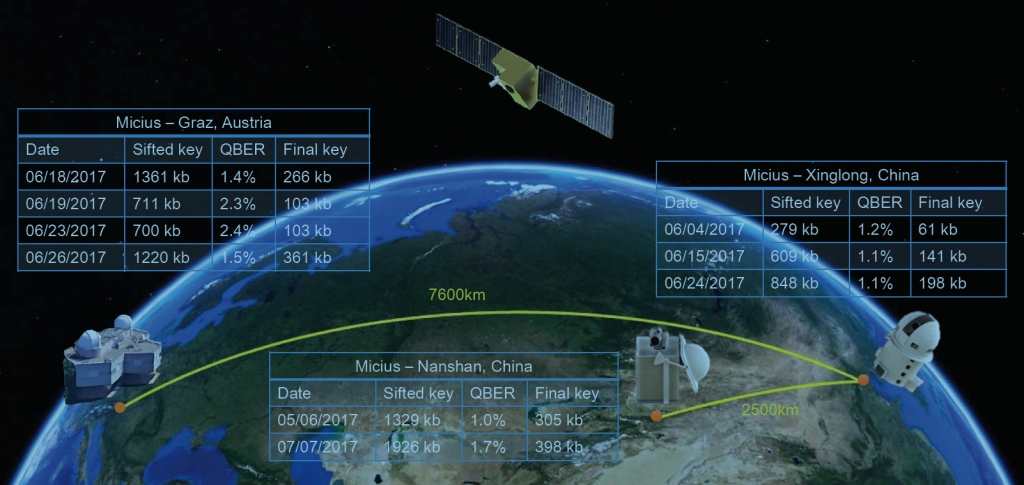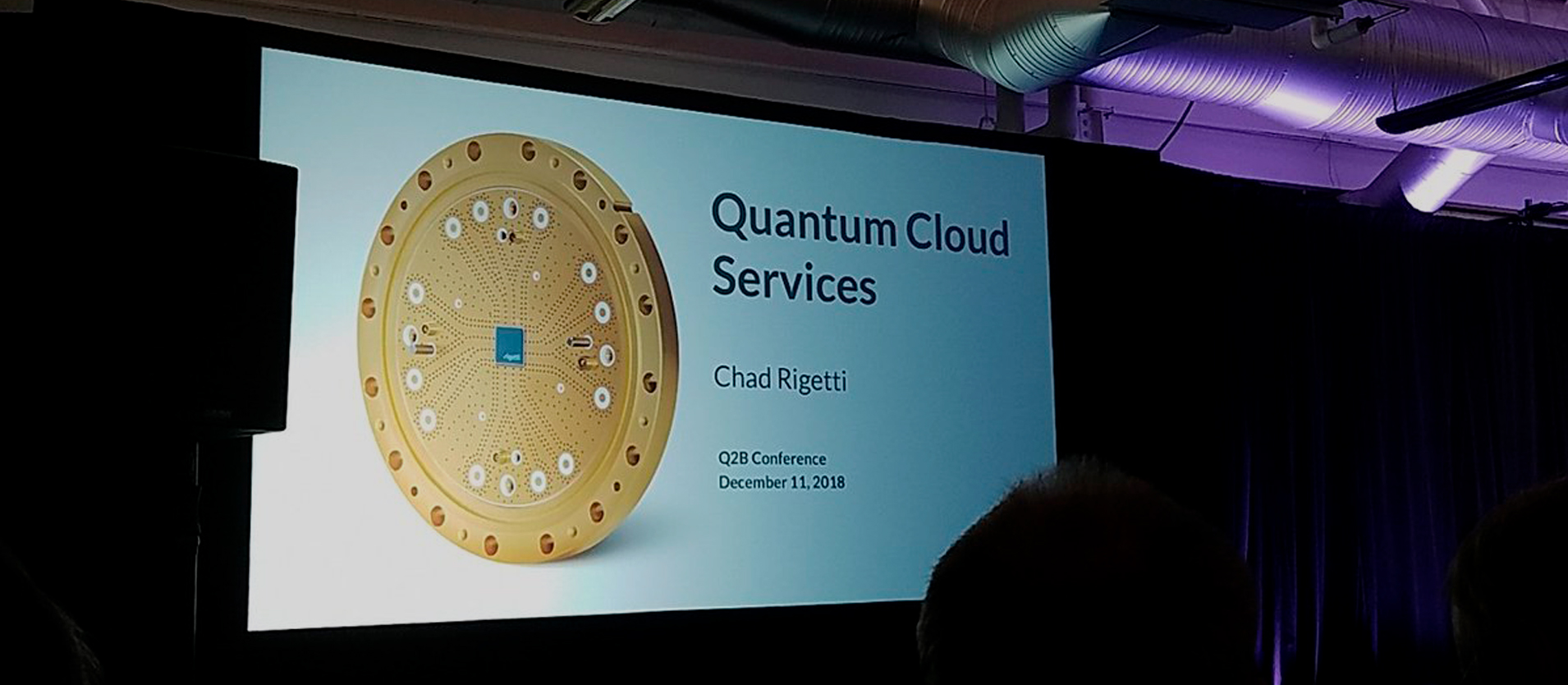China’s Quantum Key Network demonstration.
China has the quantum technology to perfectly encrypt useful signals over distances far vaster than anyone has ever accomplished, spanning Europe and Asia, according to a stunning research paper published this year on Physical Review Letters. “We have demonstrated intercontinental quantum communication among multiple locations on Earth with a maximal separation of 7,600 kilometers” say the teams, which are led by Anton Zeilinger at the University of Vienna and by Jian-Wei Pan at the University of Science and Technology of China in Hefei, China.

University of Science and Technology of China
Bits of information, or signals, pass through people’s houses, the skies overhead and the flesh of human bodies every second of every day.
Some of these signals are public, but most are private — encrypted with long strings of numbers known (presumably) only to the senders and receivers. Those keys are powerful enough to keep the secrets of modern society: credit card numbers, bank-account numbers and the passwords to covert databases. But they’re brittle. As soon as we’ll have fault tolerant scalable quantum computers, all these secrets will be in danger (it will take less than 100 seconds to to crack the codes of the defenses we’ve constructed).
Historically, every advance in cryptography has been defeated by advances in cracking technology, Jian-Wei Pan, a researcher at the University of Science and Technology of China and author on this research letter, wrote in an email. Quantum key distribution ends this battle.
Quantum keys are long strings of numbers — keys for opening encrypted files just like the ones used in modern computers — but they’re encoded in the physical states of quantum particles. That means they are protected not only by the limits of computers but the laws of physics.
Quantum keys cannot be copied. They can encrypt transmissions between otherwise classical computers. And no one can steal them — a law of quantum mechanics states that once a subatomic particle is observed, poof, it’s altered — without alerting the sender and receiver to the dirty trick.
And now, quantum keys can travel via satellite, encrypting messages sent between cities thousands of miles apart.
The researchers quantum-encrypted images by encoding them as strings of numbers based on the quantum states of photons and sent them across distances of up to 4,722 miles (7,600 kilometers) between Beijing and Vienna — shattering the previous record of 251 miles (404 km), also set in China. Then, for good measure, on Sept. 29, 2017, they held a 75-minute videoconference between researchers in the two cities, also encrypted via quantum key.

University of Science and Technology of China
How does a quantum key work?
Quantum key distribution is essentially a creative application of the so-called Heisenberg’s uncertainty principle, one of the foundational principles of quantum mechanics. The uncertainty principle states that it’s impossible to fully know the quantum state of a particle — and, crucially, that in observing part of that state, a detector forever wipes out the other relevant information that particle contains.
That principle turns out to be very useful for encoding information. A sender and receiver can use the quantum states of particles to generate strings of numbers. A computer can then use those strings to encrypt some bit of information, like a video or a text, which it then sends over a classical relay like the internet connection you’re using to read this article.
But it doesn’t send the encryption key over that relay. Instead, it sends those particles across a separate quantum network.
In the case of Micius (the satellite used in these experiments), that means sending photons, one at a time, through the atmosphere. The receiver can then read the quantum states of those photons to determine the quantum key and use that key to decrypt the classical message.
If anyone else tried to intercept that message, though, they would leave telltale signs — missing packets of the key that never made it to the sender.
Of course, no network is perfect, especially not one based on shooting information for individual photos across miles of space. As the Micius researchers wrote, the networks typically loses 1 or 2 percent of their key on a clear day. But that’s well within what Micius and the base station can work together to edit out of the key, using some fancy mathematics. Even if an attacker did intercept and wreck a much larger chunk of the transmission, whatever they didn’t catch would still be clean — shorter, but perfectly secure enough to encrypt transmissions in a pinch.
The connection between Micius and Earth isn’t perfectly secure yet, however. As the team of Chinese and Austrian authors wrote, the flaw in the network design is the satellite itself. Right now, base stations in each linked city receive different quantum keys from the satellite, which are multiplied together and then disentangled. That system works fine, as long as the communicators trust that no secret squad of nefarious astronauts has broken into Micius itself to read the quantum key at the source. The next step toward truly perfect security, they wrote, is to distribute quantum keys from satellites via entangled photons — keys the satellites would manufacture and distribute, but never themselves be able to read.
In time, the researchers wrote, they plan to launch more quantum satellites into higher orbits — satellites that will communicate with one another and with researchers on Earth in ever-more-complex webs.
This slowly spreading, ever-more-practical quantum network will first be built for China and Europe, they wrote, “and then on a global scale.”

University of Science and Technology of China




